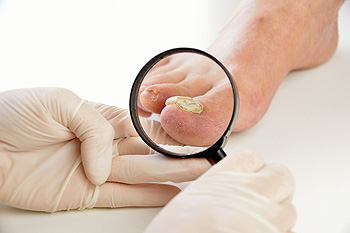April 2018
Where Does Toenail Fungus Come From?
There are several symptoms that are noticeable and will determine if you are afflicted by toenail fungus. The toenail will often appear to be a yellowish color and may be thick and rough in texture. In more severe cases, the toenail may lift from the skin or break off completely. Occasionally, small black dots can be seen on the nail, which is typically considered to be dirt that has collected underneath the toenail. This type of fungus generally thrives in warm and moist surroundings and can typically be found in pool areas and saunas. It will benefit the overall health of the toenail if this condition is treated promptly. This may include undergoing a proper diagnosis, followed by medications that can be applied to the nail for mild cases. Extreme situations may call for oral medications to be ingested, despite certain side effects that may follow. If you are afflicted by this ailment, it’s suggested to consult with a podiatrist for additional information and treatment options relative to toenail fungus.
For more information about treatment, contact Dr. Scott Shrem of Garden State Foot & Ankle Center. Our doctor can provide the care you need to keep you pain-free and on your feet.
Toenail Fungus Treatment
Toenail fungus is a condition that affects many people and can be especially hard to get rid of. Fortunately, there are several methods to go about treating and avoiding it.
Antifungals & Deterrence
Oral antifungal medicine has been shown to be effective in many cases. It is important to consult with a podiatrist to determine the proper regiment for you, or potentially explore other options.
Applying foot powder on the feet and shoes helps keep the feet free of moisture and sweat.
Sandals or open toed shoes – Wearing these will allow air movement and help keep feet dry. They also expose your feet to light, which fungus cannot tolerate. Socks with moisture wicking material also help as well.
If you have any questions please feel free to contact our office located in Hazlet, NJ . We offer the newest diagnostic tools and technology to treat your foot and ankle needs.
What are the Symptoms of Poor Circulation?
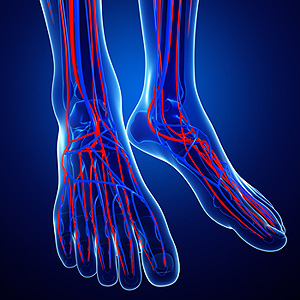 If you observe that your toenails have developed a blue or grayish hue, you may have what is referred to as poor circulation. Since the feet are typically the first area of the body where this condition is noticed, a blue or gray tinge is generally a good indicator that circulation concerns exist. There may be several reasons for this ailment to occur, and these may include a sedentary lifestyle, type 2 diabetes, or obesity. Consistent movement during the day, such as standing or walking, can help in allowing the arteries to freely carry blood and oxygen. Common symptoms that may be experienced can include a weakened pulse, cold sensations in the feet, or you may notice discolored skin. There are avenues that can be implemented to help poor circulation, including smoking cessation, incorporating exercise into your daily routine, and wearing comfortable shoes. If you would like information about poor circulation, please schedule a consultation with a podiatrist to discuss the best preventative techniques that are right for you.
If you observe that your toenails have developed a blue or grayish hue, you may have what is referred to as poor circulation. Since the feet are typically the first area of the body where this condition is noticed, a blue or gray tinge is generally a good indicator that circulation concerns exist. There may be several reasons for this ailment to occur, and these may include a sedentary lifestyle, type 2 diabetes, or obesity. Consistent movement during the day, such as standing or walking, can help in allowing the arteries to freely carry blood and oxygen. Common symptoms that may be experienced can include a weakened pulse, cold sensations in the feet, or you may notice discolored skin. There are avenues that can be implemented to help poor circulation, including smoking cessation, incorporating exercise into your daily routine, and wearing comfortable shoes. If you would like information about poor circulation, please schedule a consultation with a podiatrist to discuss the best preventative techniques that are right for you.
Poor circulation is a serious condition and needs immediate medical attention. If you have any concerns with poor circulation in your feet contact Dr. Scott Shrem of Garden State Foot & Ankle Center. Our doctor will treat your foot and ankle needs.
Poor Circulation in the Feet
Poor blood circulation in the feet and legs is can be caused by peripheral artery disease (PAD), which is the result of a buildup of plaque in the arteries.
Plaque buildup or atherosclerosis results from excess calcium and cholesterol in the bloodstream. This can restrict the amount of blood which can flow through the arteries. Poor blood circulation in the feet and legs are sometimes caused by inflammation in the blood vessels, known as vasculitis.
Causes
Lack of oxygen and oxygen from poor blood circulation restricts muscle growth and development. It can also cause:
- Muscle pain, stiffness, or weakness
- Numbness or cramping in the legs
- Skin discoloration
- Slower nail & hair growth
- Erectile dysfunction
Those who have diabetes or smoke are at greatest risk for poor circulation, as are those who are over 50. If you have poor circulation in the feet and legs it may be caused by PAD and is important to make changes to your lifestyle in order to reduce risk of getting a heart attack or stroke. Exercise and maintaining a healthy lifestyle will dramatically improve conditions.
As always, see a podiatrist as he or she will assist in finding a regimen that suits you. A podiatrist can also prescribe you any needed medication.
If you have any questions please feel free to contact our office located in Hazlet, NJ . We offer the newest diagnostic and treatment technologies for all your foot and ankle needs.
What are Orthotics?
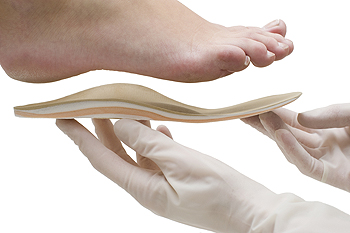 Corrective inserts that are designed to be used in shoes are often referred to as orthotics. There are several benefits to using orthotics, including providing comfort, stability, and additional support that the foot may need. They are typically used to correct certain foot abnormalities, including high arches, flat feet, or foot structures that may originate from a predisposed inherited gene. They are generally constructed of materials designed for the specific foot issue, which may be a high arch or specific heel injuries. If you have foot pain, there is a chance that orthotics may work for you. A podiatrist will be able to ascertain if orthotics are needed for your foot condition.
Corrective inserts that are designed to be used in shoes are often referred to as orthotics. There are several benefits to using orthotics, including providing comfort, stability, and additional support that the foot may need. They are typically used to correct certain foot abnormalities, including high arches, flat feet, or foot structures that may originate from a predisposed inherited gene. They are generally constructed of materials designed for the specific foot issue, which may be a high arch or specific heel injuries. If you have foot pain, there is a chance that orthotics may work for you. A podiatrist will be able to ascertain if orthotics are needed for your foot condition.
If you are having discomfort in your feet and would like to try orthotics, contact Dr. Scott Shrem from Garden State Foot & Ankle Center. Our doctor can provide the care you need to keep you pain-free and on your feet.
What Are Orthotics?
Orthotics are inserts you can place into your shoes to help with a variety of foot problems such as flat feet or foot pain. Orthotics provide relief and comfort for minor foot and heel pain but can’t correct serious biomechanical problems in your feet.
Over-the-Counter Inserts
Orthotics come in a wide variety of over-the-counter inserts that are used to treat foot pain, heel pain, and minor problems. For example, arch supports can be inserted into your shoes to help correct overarched or flat feet, while gel insoles are often used because they provide comfort and relief from foot and heel pain by alleviating pressure.
Prescription Orthotics
If over-the-counter inserts don’t work for you or if you have a more severe foot concern, it is possible to have your podiatrist prescribe custom orthotics. These high-quality inserts are designed to treat problems such as abnormal motion, plantar fasciitis, and severe forms of heel pain. They can even be used to help patients suffering from diabetes by treating foot ulcers and painful calluses and are usually molded to your feet individually, which allows them to provide full support and comfort.
If you are experiencing minor to severe foot or heel pain, it’s recommended to speak with your podiatrist about the possibilities of using orthotics. A podiatrist can determine which type of orthotic is right for you and allow you to take the first steps towards being pain-free.
If you have any questions please contact our office located in Hazlet, NJ . We offer the newest diagnostic and treatment technologies for all your foot and ankle needs.
Why Are Foot Stretches Important?
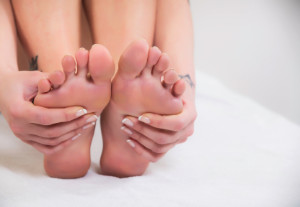 The importance of properly stretching the feet aids in the body’s ability to maintain balance. Additional benefits include developing flexibility and limber muscles, which can possibly help one avoid Achilles tendon injuries and heel pain. As the feet become stronger, the likelihood of pain in the arches and tears in the tendons will diminish. Pointing and flexing the feet is a simple yet effective stretch for the entire foot, which allows the ankles to strengthen. When pointing your toes, it’s suggested to strive for a feeling of the top of the arch becoming longer, which results in toe movement from the muscles that are stretched under the arch. If you would like additional information about the importance of proper foot stretches and techniques, please schedule a consultation with a podiatrist.
The importance of properly stretching the feet aids in the body’s ability to maintain balance. Additional benefits include developing flexibility and limber muscles, which can possibly help one avoid Achilles tendon injuries and heel pain. As the feet become stronger, the likelihood of pain in the arches and tears in the tendons will diminish. Pointing and flexing the feet is a simple yet effective stretch for the entire foot, which allows the ankles to strengthen. When pointing your toes, it’s suggested to strive for a feeling of the top of the arch becoming longer, which results in toe movement from the muscles that are stretched under the arch. If you would like additional information about the importance of proper foot stretches and techniques, please schedule a consultation with a podiatrist.
Stretching the feet is a great way to prevent injuries. If you have any concerns with your feet consult with Dr. Scott Shrem from Garden State Foot & Ankle Center. Our doctor will assess your condition and provide you with quality foot and ankle treatment.
Stretching the Feet
Being the backbone of the body, the feet carry your entire weight and can easily become overexerted, causing cramps and pain. As with any body part, stretching your feet can serve many benefits. From increasing flexibility to even providing some pain relief, be sure to give your feet a stretch from time to time. This is especially important for athletes or anyone performing aerobic exercises, but anyone experiencing foot pain or is on their feet constantly should also engage in this practice.
Great ways to stretch your feet:
- Crossing one leg over the others and carefully pull your toes back. Do 10-20 repetitions and repeat the process for each foot
- Face a wall with your arms out and hands flat against the wall. Step back with one foot and keep it flat on the floor while moving the other leg forward. Lean towards the wall until you feel a stretch. Hold for 30 seconds and perform 10 repetitions for each foot
- Be sure not to overextend or push your limbs too hard or you could risk pulling or straining your muscle
Individuals who tend to their feet by regular stretching every day should be able to minimize foot pain and prevent new problems from arising.
If you have any questions, please feel free to contact our office located in Hazlet, NJ . We offer the newest diagnostic and treatment technologies for all your foot care needs.
Causes of Gout
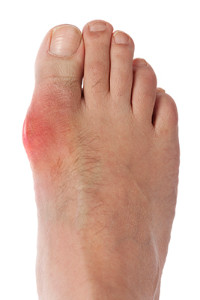 Gout is considered to be a form of arthritis. The pain associated with an attack of gout is commonly described as severe and generally affects the big toe, possibly causing difficulty in walking. Crystals develop from the excess of uric acid produced by the body, and typically lodge in the joints of the big toe. Inflammation in the joints is a result of this build-up and this typically causes redness, swelling, and discomfort. There are several possible causes for this condition to occur including ingesting excess alcohol, drinking beverages that are high in sugar content, and consuming certain foods such as herring, sardines, or foods that are rich in yeast. Treatment options for gout attacks may include elevating the foot to reduce any swelling, or taking anti-inflammatory painkillers. If you are affected by this ailment, please consult with a podiatrist for additional information, and prevention techniques for gout.
Gout is considered to be a form of arthritis. The pain associated with an attack of gout is commonly described as severe and generally affects the big toe, possibly causing difficulty in walking. Crystals develop from the excess of uric acid produced by the body, and typically lodge in the joints of the big toe. Inflammation in the joints is a result of this build-up and this typically causes redness, swelling, and discomfort. There are several possible causes for this condition to occur including ingesting excess alcohol, drinking beverages that are high in sugar content, and consuming certain foods such as herring, sardines, or foods that are rich in yeast. Treatment options for gout attacks may include elevating the foot to reduce any swelling, or taking anti-inflammatory painkillers. If you are affected by this ailment, please consult with a podiatrist for additional information, and prevention techniques for gout.
Gout is a foot condition that requires certain treatment and care. If you are seeking treatment, contact Dr. Scott Shrem from Garden State Foot & Ankle Center. Our doctor will treat your foot and ankle needs.
What Is Gout?
Gout is a type of arthritis caused by a buildup of uric acid in the bloodstream. It often develops in the foot, especially the big toe area, although it can manifest in other parts of the body as well. Gout can make walking and standing very painful and is especially common in diabetics and the obese.
People typically get gout because of a poor diet. Genetic predisposition is also a factor. The children of parents who have had gout frequently have a chance of developing it themselves.
Gout can easily be identified by redness and inflammation of the big toe and the surrounding areas of the foot. Other symptoms include extreme fatigue, joint pain, and running high fevers. Sometimes corticosteroid drugs can be prescribed to treat gout, but the best way to combat this disease is to get more exercise and eat a better diet.
If you have any questions please feel free to contact our office located in Hazlet, NJ . We offer the newest diagnostic and treatment technologies for all your foot and ankle needs.
Blog Archives
- April 2025
- March 2025
- February 2025
- January 2025
- December 2024
- November 2024
- October 2024
- September 2024
- August 2024
- July 2024
- June 2024
- May 2024
- April 2024
- March 2024
- February 2024
- January 2024
- December 2023
- November 2023
- October 2023
- September 2023
- August 2023
- July 2023
- June 2023
- May 2023
- April 2023
- March 2023
- February 2023
- January 2023
- December 2022
- November 2022
- October 2022
- September 2022
- August 2022
- July 2022
- June 2022
- May 2022
- April 2022
- March 2022
- February 2022
- January 2022
- December 2021
- November 2021
- October 2021
- September 2021
- August 2021
- July 2021
- June 2021
- May 2021
- April 2021
- March 2021
- February 2021
- January 2021
- December 2020
- November 2020
- October 2020
- September 2020
- August 2020
- July 2020
- June 2020
- May 2020
- April 2020
- March 2020
- February 2020
- January 2020
- December 2019
- November 2019
- October 2019
- September 2019
- August 2019
- July 2019
- June 2019
- May 2019
- April 2019
- March 2019
- February 2019
- January 2019
- December 2018
- November 2018
- October 2018
- September 2018
- August 2018
- July 2018
- June 2018
- May 2018
- April 2018
- March 2018



